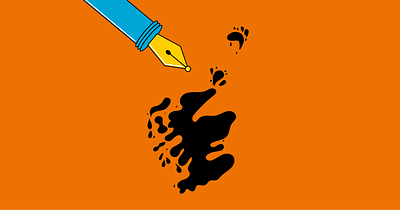Looking for all Articles by Philippa Cochrane?
Writing prompt: Tales to treasure
Use these activities to write about a story you treasure

As we get to spend time together again, as we meet up with friends and family for a cup of tea, or a meal together, as we stop to chat with neighbours over the gate or on the high street – those shared stories we have told again and again will be a big part of reconnecting.
If you don't recount your family history, it will be lost. Honor your own stories and tell them too. The tales may not seem very important, but they are what binds families and makes each of us who we are.
It could be the story about the time you and your college pals stayed up to watch the sunrise, or the disastrous train journey when you spent six hours sat next to the person who became the love of your life. It could be about your grandfather who saved someone's life or the time you and your siblings accidentally set fire to the kitchen. These stories from our shared histories – of the moments that made a friendship, remember a loved one, recapture childhood or that have just always made us laugh together – tell us who we are and why we matter to one another.
Old stories are like old friends. You have to visit them from time to time.
Warm-up exercise: Story mood board
A mood board is a visual tool to gather all the important elements in the story. It is a collage of images, words and objects that evoke and illustrate aspects of the story you want to tell. Creating a mood board is a useful exercise to start thinking about how you want to tell the story. It is also a lovely way to capture a treasured tale in itself.
You can include whatever you like in your mood board. The finished project should capture the key elements of the story – the narrative and the feeling of it. The following tips might be helpful:
- Stick within a colour palette – choose a couple of colours that fit your story's emotion/mood/setting and try to keep the images you pick within those colours.
- Think about two strong emotions your story evokes – select images to capture those.
- Consider including text – both as part of the visuals of the mood board and to explain elements you have included.
- Use a range of components in a physical board – including old photos, images from magazines, typed text and written notes and other objects like bus tickets, maps, programmes, fabrics etc.
- Make it online – you can also create a digital mood board. There are many free mood board websites and apps that allow you to add pictures and text and move them around until you are happy with the result.
Brainstorm: Story mirror map
To write about your treasured tale, you will need to think about 'the story of your story': how has it been told? Who by? Where? How does it make you feel to hear it shared?
Download and use the story mirror map tool at the bottom of this page to map what happens in your tale to treasure against how it is told. Here's an example of how you might fill it in:
| What's in a tale to treasure | Telling the tale |
|---|---|
|
When: when your tale to treasure took place |
When: when your tale gets told |
|
Where: where it happened |
Where: where it gets told |
|
Who: who the story is about |
Who: who tells the story and who do they tell it to/with |
|
Why: why the events took place |
Why: why it is told |
|
How: how it feels at the time |
How: How telling it or hearing it again makes you feel |
As you fill in each section, think back to your mood board. Think about the images and emotions that arise in your mind. What were your senses telling you?
For example, your treasured story might be about a long walk through the snow in the dark. Maybe it happened at night, during your childhood. Perhaps you were with your grandfather who was bringing you home from football – the car broke down and you had to walk home. So in the story, it would be cold and still, and the lights would be reflecting off the snow and everywhere would be quiet. Perhaps you and your grandfather pretended you were the only people in the world for the whole walk home.
But you also might tell this story when you get together with family, with food and drink and lots of chatter and laughing – maybe indoors, at Christmas, maybe around a fire. So there would be warmth, and lots of colour and noise and you would feel surrounded and very much part of a large group. Maybe it's told to remember your grandfather, perhaps because it speaks of the place you grew up, or it's the first time you remember seeing snow.
Start writing
As you write, consider including those contrasts and the connections between what happens in the tale you treasure and what happens when you tell it. Describe bits of detail from each. Write about what you can hear, smell, taste, see and touch. These elements can help to show someone reading your piece why the tale you treasure is so important to you and what it means to your family, friends and community.
Every family has a story that it tells itself, that it passes on to the children and grandchildren. The story grows over the years, mutates, some parts are sharpened, others dropped and there is often debate about what really happened. But even with these different sides of the same story, there is still agreement that this is the family story.